Wrocław 2024-01-23
PaFaWag - State Wagon Factory.
Geographic coordinates: 51.112N 16.988E. Elevation 120m.
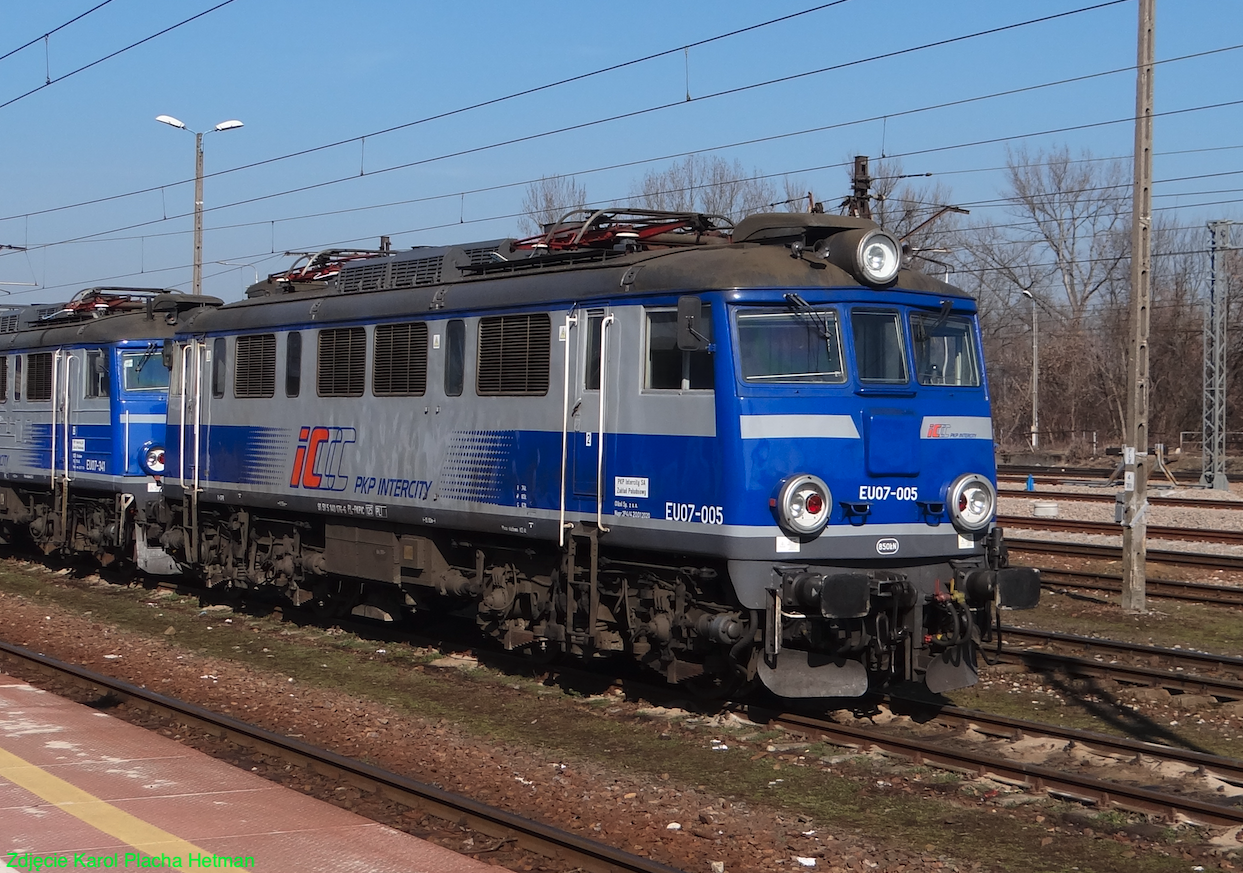
Photo description: Electric locomotive EU07-005 No. 4E-005, produced in 1967. One of the first produced at PaFaWag. The locomotive has already been renovated and has air conditioning installed and multiple controls removed.
During the period of the Polish People's Republic, there were several industrial plants in Poland that produced railway rolling stock. The largest include; "PaFaWag" in Wrocław, "HCP" in Poznań, "FabLok" in Chrzanów and "Zastal" in Zielona Góra. All of them had a great impact on the development of the local community. Not only did they provide employment, but they also ran company schools, nurseries, kindergartens, medical clinics, community centers, cinemas, recreation centers and even sports clubs. These factories influenced the development of roads and mass transport in the city.
"PaFaWag", the State Wagon Factory in Wrocław, employed 7,800 workers in 1978 and was the largest employer in the city.
History of PaFaWag.
The history of PaFaWag began in the 19th century, when Wrocław was called Breslau and was under the rule of the Prussians. In 1833, Gotfryd Linke founded a carpentry workshop. From 1839, the plant operated as Wagenbauanstalt Gottfried Linke (Wagon Construction Plant Gottfried Linke). In 1871, the Prussian-French War ended and France lost. As a result, France had to pay large contributions. The living standard of the Germans improved significantly. At the same time, they decided to invest in the development of the railway. Especially since they missed their Muscovite brothers very much. This is how the Ostbahn was created; Prussian Eastern Railway. Gotfryd Linke's workshop won favorable orders for rolling stock and expanded significantly. In 1912, the plant became a joint-stock company; "Linke-Hofmann-Werke" and became the largest industrial plant in Lower Silesia. The name of the factory changed several times. The most famous name was Linke-Hofmann Werke (Linke-Hofmann Works). During the Great World War, the factory also produced planes for the Germanic army. Before World War II, the factory also produced tram rolling stock. The factory survived the Great World War unscathed, fulfilling orders for the army. In 1939, stupid Germans started World War II and lost more territories.
During World War II, approximately 5,000 forced laborers worked in the factory in Wrocław. They were imprisoned on the factory premises. In addition to wagons, propulsion systems for V2 rockets and other war equipment were also produced. In 1945, the factory was razed to the ground. The damage amounted to 80%. The Soviets took all the machines to CCCP. The great people of this world decided that Lower Silesia would become part of Poland. The city of Breslau received the historic Polish name of Wrocław.
Production of wagons.
Polish factory workers quickly started repairing the damaged rolling stock. Each wagon was very valuable to PKP. The reconstruction of the halls began in September 1945. The first new coal wagons were handed over to the Polish State Railways in November 1945. These were wagons assembled from parts left by the Germans, and the missing elements were made by hand. The coal wagons produced were of the so-called Germanic Klagenfurt type (2W). Subsequent versions of the wagons were already Polish modernization. In January 1946, the 100th coal car was produced. A large part of the production was carried out on wheel sets with a rail gauge of 1,520 mm, because these wagons were sent to Moscow.
In the 1940s, a dozen or so C4ü42 passenger carriages were assembled from components left by the Germans, and the production of an own-design type 1A passenger carriage began, of which 1,500 were produced.
By 1948, 10,000 wagons had been produced. In 1946, the plant began producing trams for transport in Warsaw. In the 1950s, the PaFaWag plant also produced 30D43 and 32D43 barrel tenders for steam locomotives.
Since 1960, coal trucks with steel walls have been produced. The production of freight wagons in Wrocław was one of the priorities for the national economy. 28 types of two-axle covered wagons were produced; fruit trucks, lime trucks, baggage wagons, mail wagons, tank wagons for transporting bulk cement, wagons for transporting grain, refrigerated wagons with dry ice, wagons for transporting livestock.
At the beginning of the 1960s, large-scale production of Y standard passenger wagons (111A, 112A) and wagons for local traffic (101A, 120A) began.

The recipients of the production of the factory in Wrocław were socialist countries, as well as; India, the Netherlands, Egypt, Finland and Greece. Slowly, Poland became one of the world's largest exporters of railway rolling stock, mainly freight wagons. Semi-finished products were delivered from: Huta im. Lenina (sheets for wagon walls), Huta Łabędy (steel profiles). In the 1970s, sheets with greater corrosion resistance were used; steel with an admixture of copper (25-55 U+2030) and with an admixture of chrome (1.25 U+2030). Westinghouse and Oerlikon braking systems were used in the wagons.
In the 1970s, PaFaWag produced Class 2 passenger cars with 11 passenger compartments for the railways of Greece and Yugoslavia. At that time, mainly steel and aluminum were used to produce passenger cars. There were few plastics because the Polish industry had not yet mastered the production of industrial plastics with adequate strength. In the 1970s, PaFaWag had its own 2,600 m long test track.
Electric Vehicles.
PaFaWag specializes in the production of electric vehicles and EMUs. In the period 1953–1957, the factory produced eight E110 (Bo-Bo) locomotives and the same number of 2E locomotives for the mining industry for the rebuilt Warsaw Railway Junction.
In the period 1954–1956, 20 E53 (EW53) units were produced. Then, in the period 1958-1962, 72 EMUs EW55 were built. They were adapted to high platforms.
In the period 1962-1993, EMU EN57 was produced. 1,452 units were built. Design work on the new passenger train was carried out in the period 1959–1961, in parallel with the EW55 EMU train for the Warsaw and Gdańsk junctions. Therefore, the compositions of EN57 and EW55 are very similar. They differ in the number of door pairs in one carriage and the entrance steps. The documentation was prepared by the Central Design Office of the Rolling Stock Industry Poznań (currently OBRPS Poznań). The prototype EN57 train made its first run in December 1961. Production was located in Wrocław at the "PaFaWag" factory. In the "PaFaWag" factory, power wagons were marked type 6B, and control and control wagons were type 5B.
The EN57 EMU is a Polish design that was produced from January 1962 to July 1993, i.e. for 31 years. The EN57 train is the longest-produced rail vehicle in the world. In 2021, the 60th anniversary of the first train, an electric unit, was built. A total of 1,429 units were built. Other sources indicate the number of 1,452 units, including those exported to Yugoslavia and four-car EMUs.

On the basis of the EMU EN57 composition, the "Pafawag" factory also built four-unit units with an additional motor unit, which were marked EMU EN71. The first such train was built in 1964. These trains were initially created to service the difficult Krakow - Zakopane route. In 1965, Yugoslavia bought this type of trains. Apparently, in Yugoslavia, trains were called "Gomułka" after Władysław Gomułka (first secretary of the Polish United Workers' Party), during whose times the trains were sent to the Balkans.
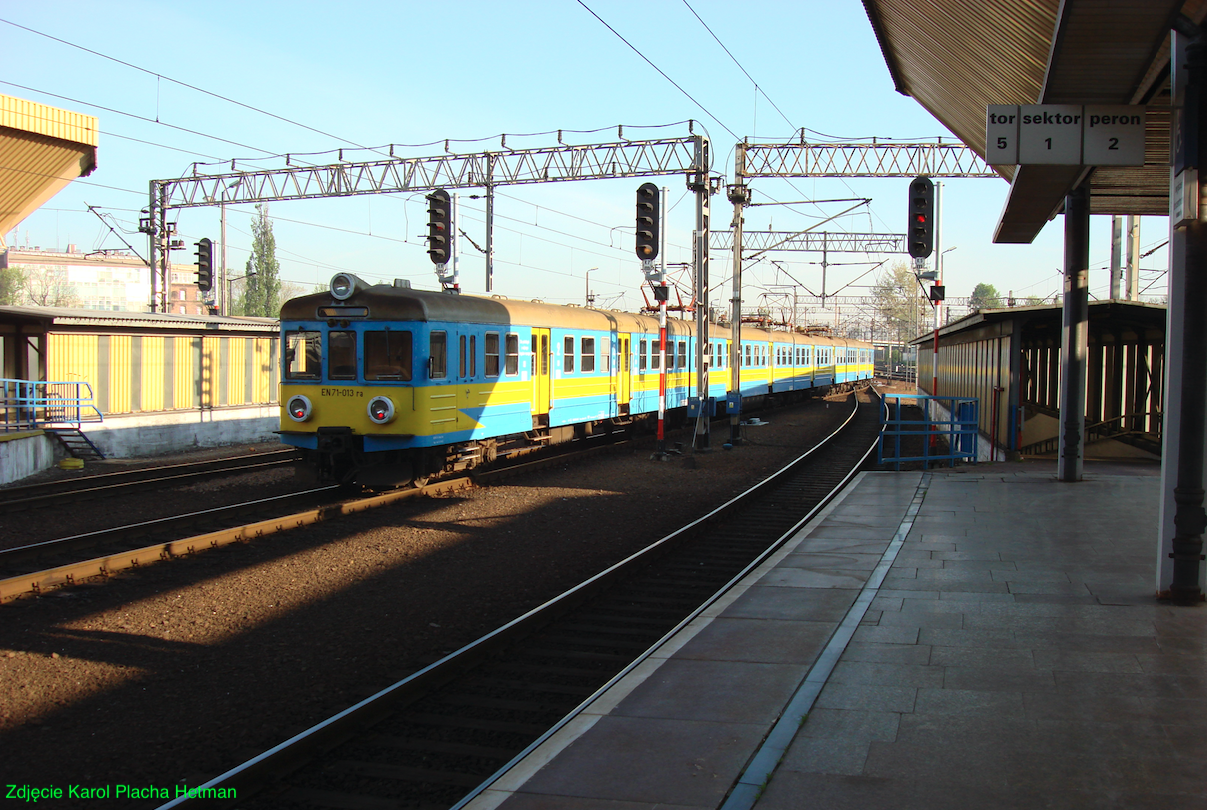
In its 70th year, PaFaWag faced yet another challenge. Most countries in Europe were already switching to electric traction powered by alternating current, and the offer did not include EN57 EMUs powered by alternating current. Therefore, no foreign contract could be concluded. In the 1970s, EN57 was produced in Wrocław at a rate of up to 60 EN57 EMUs per year. But typically up to 40 units were built in a year.
Locomotives.
In 1951, documentation for the new EP02 locomotive was developed at the Central Design Office of the Rolling Stock Industry in Poznań. The structure includes many modern design solutions that did not exist in the interwar period. The design of the box and soleplate has been changed compared to its predecessors. The sheets were joined by welding, not riveting. The headstocks with the pulling element and buffers were installed. The outline of the box is more streamlined. The bogies have a lighter, welded structure with a shorter wheelbase, which ensured better cooperation with the track. The wheel sets are supported on double-row rolling bearings.
Production of EP02 began at the PaFaWag plant in Wrocław, and the factory designation was given to type 1E, and then changed to E110. The electrical equipment was purchased in England. The first EP02 locomotive was built in August 1953. The locomotive was sent for tests on electrified sections around Warsaw. The first six locomotives were registered with the Polish State Railways in 1954, the seventh locomotive was introduced into service in 1956, and the last, eighth one, in 1957. The locomotives had factory markings from E110 to E117. The PKP designation was the E02 series, and in 1960, it was changed to the EP02 series. The locomotive numbers were assigned from EP02-01 to EP02-08.
The first locomotives of the EP02 series entered service at the Warszawa Zachodnia locomotive depot in Ochota and began servicing trains on the Warsaw - Katowice, Warsaw - Łódź, Łódź - Gliwice, and Warsaw - Kutno routes. In 1958, the locomotives were moved to the Łódź Olechów locomotive depot. In 1969, the locomotives were moved to the Dębica locomotive depot at DOKP Kraków. The locomotives served passenger trains on the Kraków - Przemyśl route.
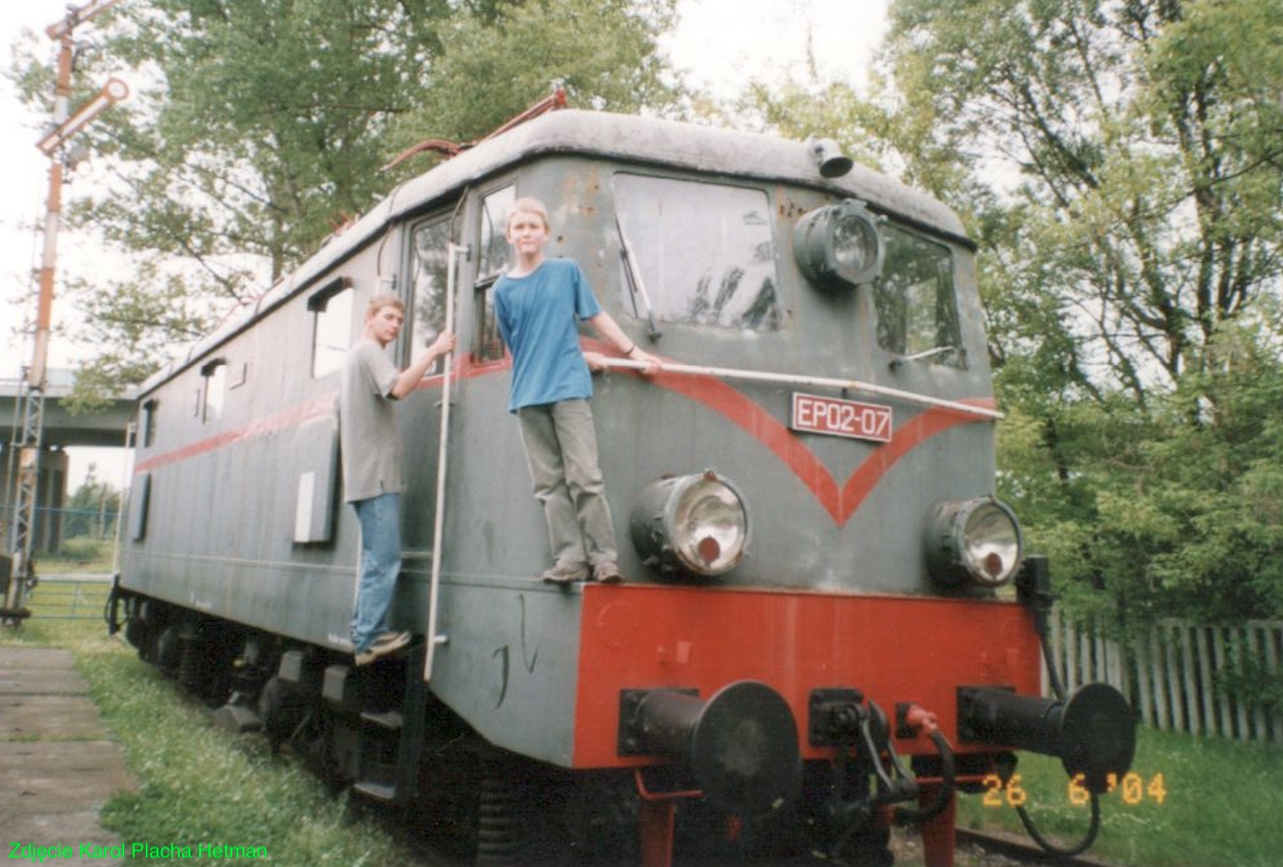
Another product of the factory in Wrocław was a type 3E electric locomotive based on the Soviet WL21M design, originally designated E06 by PKP and ET21 by PKP. ET21 is the first Polish electric freight locomotive, which was mass-produced at the "PaFaWag" factory in Wrocław in the number of 726 units, in the period 1956-1971. In 1955, in Poznań, based on the experience gained, an electric locomotive adapted to pull heavy freight trains was developed. The product was marked PaFaWag 3E, and subsequent versions 3E/1, 3E/1M. In PKP the locomotive was marked ET21. The ET21 vehicle is a standard gauge electric locomotive with high tractive power. The locomotive was designed in 1957 at the Central Rolling Stock Design Office in Poznań. The electric part of the locomotive was modeled on the Soviet WŁ22M design. The locomotive has a Co'Co' axle system. Each axle is driven by one electric motor. Electric motors of the LKa635 or LKb635 type were used, produced at the "Dolmel" plant. The electric motor gear ratio is 85:24. Other electrical components were also produced in the "Dolmel" plant. The locomotive has bogies with fork-guided wheel sets, which at the time of design was considered an outdated but acceptable solution.
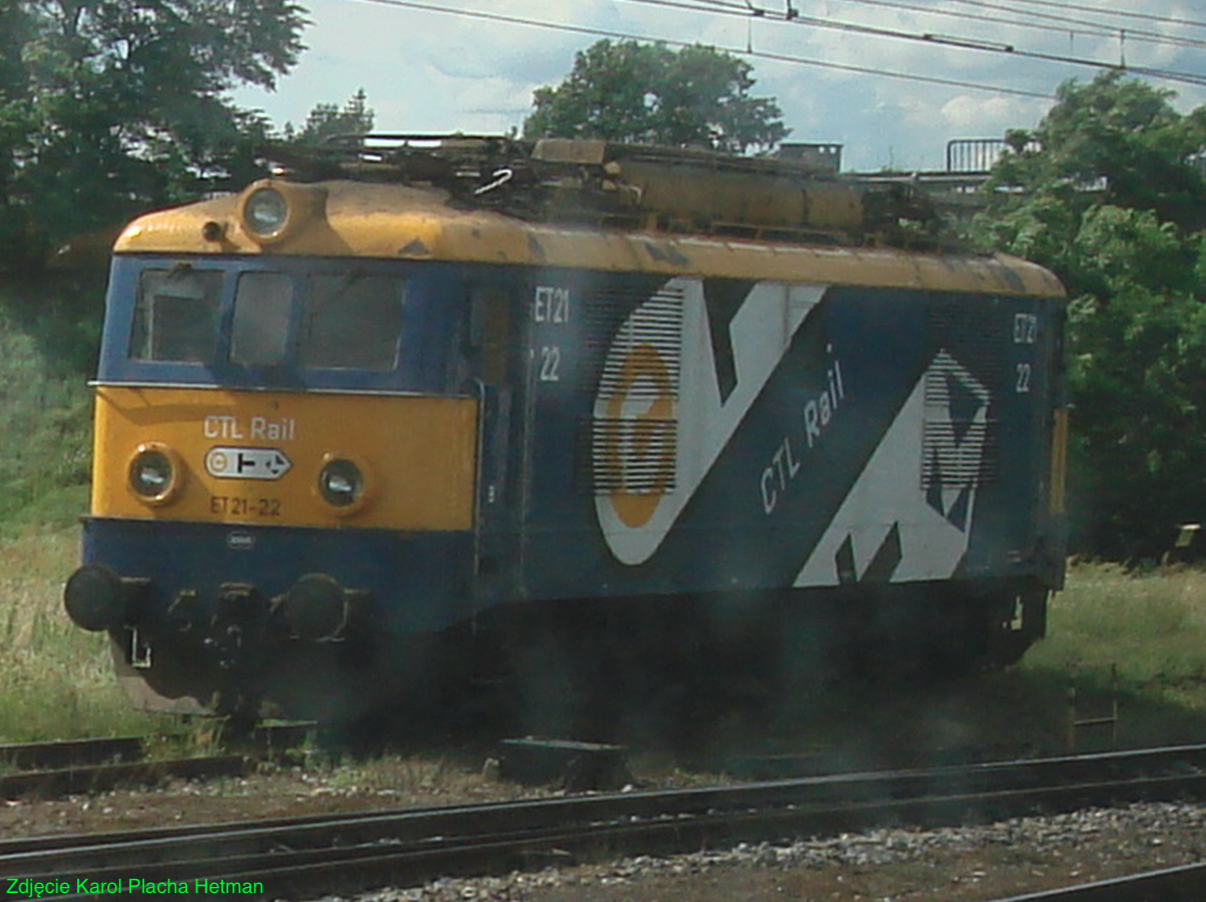
At the beginning of the 1960s, PKP imported 20 EU06 electric locomotives from the UK and bought a license for their production. In the period 1965–1974, the factory produced 240 units of these electric locomotives, marked EU07 (4E).
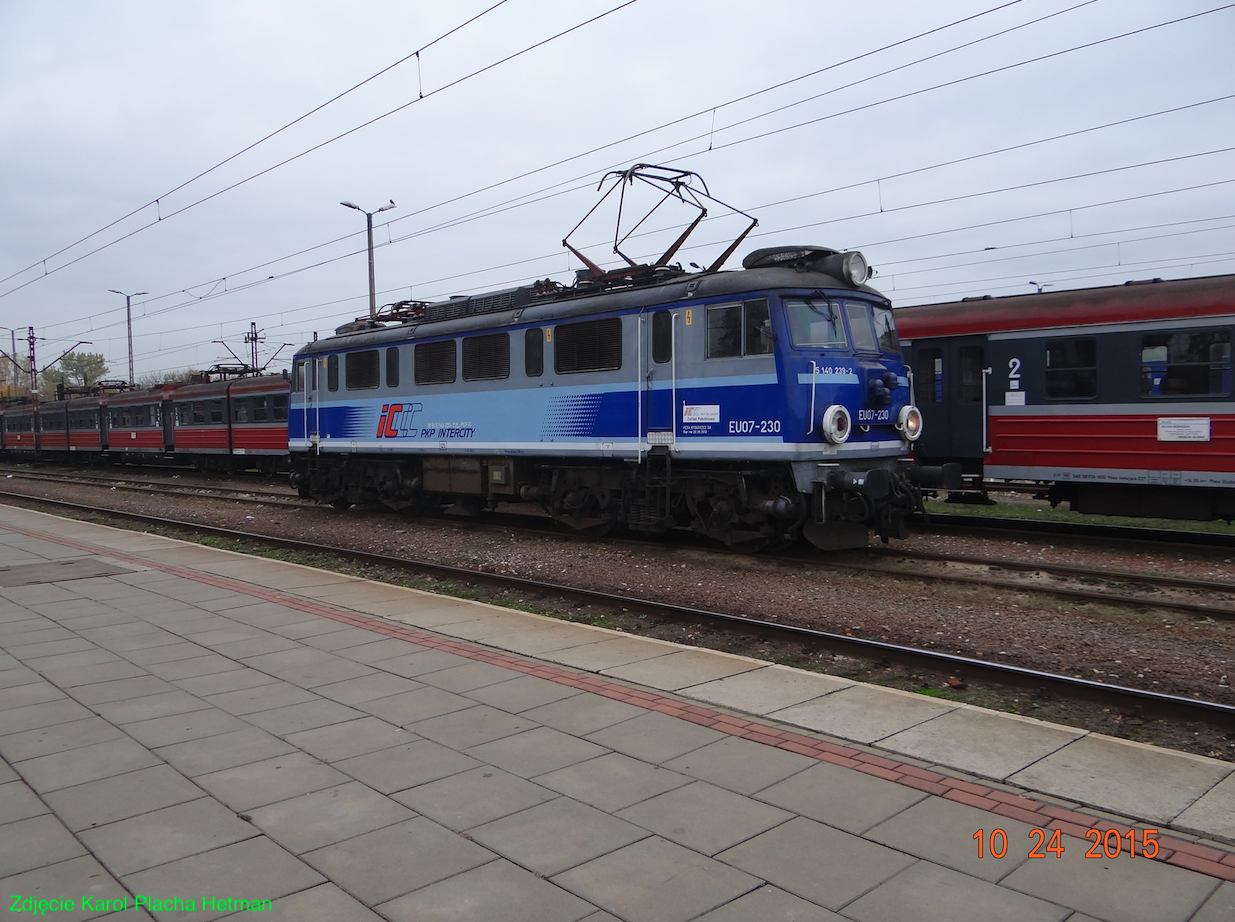
In the period 1976–1977, 4 locomotives of the EP08 series (serial numbers from EP08-002 to 005; type 4Ea) were included in the EU07 series because they did not meet the requirements of the EP08 series. They were equipped with sliding bearings, which turned out to be inappropriate for the assumed operational speed of EP08, i.e. 140 km/h. These locomotives received new numbers from EU07-241 to 244. EP08 (4Ea) locomotives were built from 1972, especially for fast and express trains from Warsaw to Poznań. These locomotives were called "Swinka" due to their orange color. Originally, 15 EP08 locomotives were to be built.
The ET22 locomotive (Co-Co, 201E) is a completely Polish design. ET22 is a Polish heavy locomotive produced in the period 1969 - 1989, at the PaFaWag factory under the designation 201E. A total of 1,184 units were produced for PKP and 23 locomotives for Morocco. The ET22 locomotive was developed in the railway construction office in Poznań. The project was based on experience from the operation of ET-21 locomotives, which had been in use since 1957. The locomotive was initially designated 7E and was eventually designated 201E. Due to the long production period, the locomotive was subject to several modifications.

In 1981, documentation was completed for the type 104E locomotive, which was marked EP09 in PKP and popularly called "Nine" or "Epoka". The construction of prototypes and serial locomotives was commissioned to the National Wagon Factory (PaFaWag) in Wrocław. In 1986, two prototypes were built. The second prototype was shown at the Poznań International Fair in June 1987. By 1997, 47 EP09 (Bo-Bo, 104E) locomotives left the plant. The EP09 locomotive pulls passenger trains at a speed of 160 km/h.
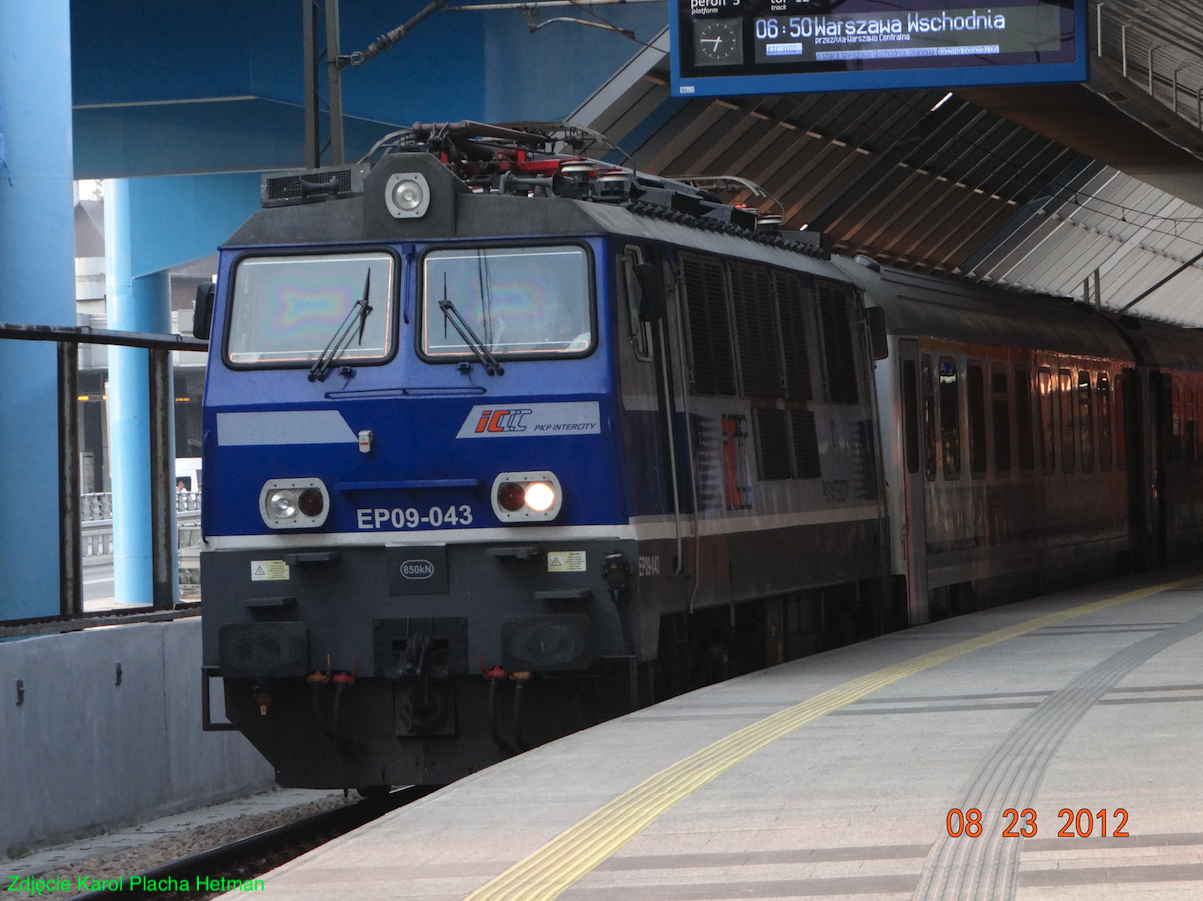
In 1996, PKP expressed its willingness to acquire new electric locomotives. The Adtranz-Pafawag 113E locomotive, marked EU11 in PKP, is an electric, single-system locomotive (3 kV DC) produced in the Adtranz-Pafawag plant in Wrocław in 42 units. The locomotives were ordered by PKP, but due to the destruction of the Polish Railways by Masonic governments, they were not purchased. Ultimately, the locomotives were purchased by the Italian Railways.
The end of PaFaWag.
In 1997, the company was sold to the Adtranz concern and changed its name to Adtranz-Pafawag Spółka. In 2000, the owner changed once again to Bombardier Transportation Polska Spółka. The plant turned from a manufacturer of final products into a subcontractor of spare parts. In 2021, Bombardier was acquired by Alstom. Electric locomotives, locomotive bodies, railway equipment and rail vehicle bogie frames are manufactured there. Currently (2021), the company employs 4,000 employees in plants located in 9 locations in Poland. PaFaWag made history.
Written by Karol Placha Hetman
